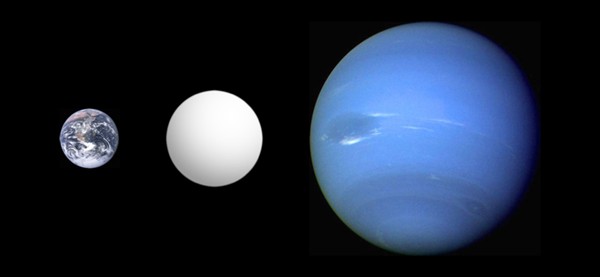Key Takeaways:
NASA’s Kepler/K2 mission, which seeks out transiting exoplanets, discovered the triplets, named GJ 9827b, c, and d. According to Kepler’s overall findings, super-Earth-sized planets (which have masses larger than Earth but smaller than Uranus and Neptune) are the most common in the Milky Way Galaxy. However, no planets of this size exist within our solar system. A group of researchers, led by Johanna Teske of the Carnegie Institution for Science, set out to determine why by learning more about the environment in which these planets formed.
The first step to understanding their formation is to determine their compositions. Are they rocky, like Earth, or do they have smaller cores surrounded by large, gaseous envelopes, like the ice giant Neptune? To find out, the researchers needed to establish their bulk densities by measuring their masses and radii.
But “usually, if a transiting planet is detected, it takes months if not a year or more to gather enough observations to measure its mass,” Teske explained in a press release. Fortunately, Carnegie scientists had already been observing GJ 9827 with their Planet Finding Spectrograph (PFS) on the Magellan II Telescope in Chile, and had the data on hand. “Because GJ 9827 is a bright star, we happened to have it in the catalog of stars that Carnegie astronomers been monitoring for planets since 2010. This was unique to PFS,” Teske said.
The researchers used PFS’s data to compare the planets’ radii to that of Earth, and found that planet b is 1.64 times larger, planet c is 1.29 times larger, and planet d is 2.08 times larger. Based on this, they were able to test a trend observed among exoplanets: If a planet’s radius is more than 1.7 times that of Earth, it tends to be an ice giant, and if it’s smaller, it tends to be rocky. Researchers have suggested that a process called photoevaporation could be the root cause of this trend. Photoevaporation rids a planet of its envelope of volatiles (elements with low boiling points, like hydrogen, carbon dioxide, and water), leaving behind a rocky core and a smaller radius. However, more research is needed to corroborate this theory — and their unique range of sizes throws GJ 9827’s planets into a unique zone for comparison.
When evaluating the planets’ mass, PFS found that planet b weighs about eight times as much as Earth, placing it among the densest and most massive super-Earths ever found. It’s believed that the planet is about 50 percent lead, which would help explain its hefty mass. Although researchers aren’t as confident with the other planets’ measurements, they estimate that planets c and d have masses two and a half and four times that of Earth, respectively. Planet d’s radius-to-mass ratio suggests that it has a prominent volatile envelope, as expected, but planet c’s ratio leaves researchers uncertain.
Although additional research is needed to definitely determine their compositions, the three super-Earths will serve as tools for astronomers looking to understand the formation and evolution of planets similar in size to our own. The researchers hope to use NASA’s highly anticipated James Webb Space Telescope to study the planets in further detail and gain insight into the mystery of their origin.










